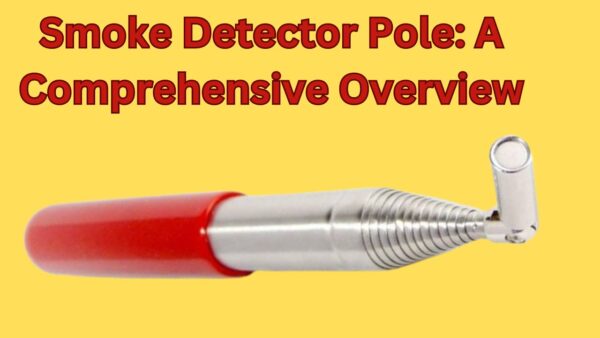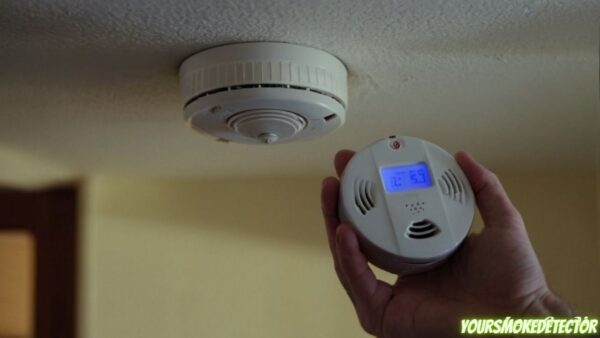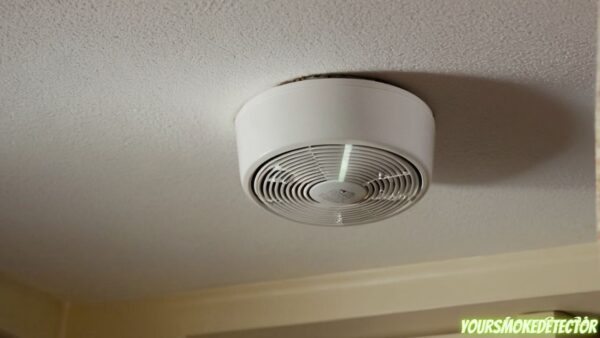The smoke detector pole, an integral tool in the world of fire safety, combines accessibility and efficiency in an innovative package.
Designed to test and maintain ceiling-mounted smoke detectors, this device minimizes the need for ladders or scaffolding, ensuring safety and convenience.
This article offers an in-depth look at the smoke detector pole, exploring its features, usage, and the benefits it brings to both residential and commercial settings.

Types of Smoke Detector Poles
1. Photoelectric Smoke Detector Poles

Photoelectric Smoke Detector Poles are a specific type of fire safety equipment designed to detect smoke particles using light sensors.
They operate on the principle of light scattering and absorption. When smoke enters the detector’s sensing chamber, it disrupts the light beam, thereby triggering the alarm.
These poles are particularly effective at detecting slow, smoldering fires that produce large particles of smoke.
It’s crucial to understand that while they provide robust detection capabilities, they may not be as effective in detecting fast-flaming fires.
2. Ionization Smoke Detector Poles

Ionization Smoke Detector Poles are vital pieces of equipment in fire detection and safety. This technology leverages ionizing radiation to detect even the smallest particles of smoke.
When smoke enters the ionization chamber, it disrupts the flow of ions and triggers the alarm. This makes it highly effective at detecting fast-flaming fires, providing timely alerts, and increasing evacuation time.
Importantly, these detectors should not be installed in kitchens or areas with high dust, as they may produce false alarms.
But, their quick response time to fast-flame fires certainly makes them a crucial part of any comprehensive fire safety plan.
3. Combination Smoke Detector Poles

Combination Smoke Detector Poles represent an innovative solution in fire safety, designed to deliver high levels of reliability and responsiveness.
They serve as an essential tool in the quick detection and alerting of smoke, consequently minimizing potential damage and loss of life.
These devices double up as both a smoke detector and a pole, utilizing advanced technology to detect smoke particles in the environment instantly.
They are particularly beneficial in large, open spaces with high ceilings where traditional smoke detectors may be less effective.
4. Key Features of Effective Smoke Detector Poles
The Key Features of Effective Smoke Detector Poles include aspects like reliability, user-friendliness, and advanced technology.
Reliability: A reliable smoke detector pole quickly detects and alerts about the presence of smoke. It should offer minimal false alarms and should function optimally in varying environmental conditions.
User-friendliness: It must be easy to install and maintain. The user should be able to understand the functioning and interpret the alerts of the detector.
Advanced Technology: The pole should leverage advanced technology like photoelectric sensors for accurate detection. It should also incorporate features like wireless connectivity for remote monitoring and control.
These key features ensure that smoke detector poles aid in timely detection and alerting of potential fire hazards, ensuring safety and security.
5. Regulations and Standards
In the realm of business, Regulations, and Standards serve as critical guideposts for operating responsibly and achieving sustainable growth.
Compliance with regulations: Failing to adhere to business regulations can result in hefty fines and legal trouble, jeopardizing the company’s reputation and financial health.
Industry standards: Abiding by industry standards is pivotal for maintaining a competitive edge and fostering customer trust. Non-compliance with industry standards can lead to loss of business opportunities.
Ethical standards: While not always legally required, following ethical standards demonstrates a commitment to fair practices. Breach of ethical standards can severely damage a company’s brand image.
Conclusion
In the realm of safety and security, the incorporation of devices like the Smoke Detector Pole plays a pivotal role.
These tools ensure the early detection of potential fire hazards, safeguarding lives and property from catastrophic damage.
Ensuring compliance with safety regulations, standards, and ethical practices related to the use of such devices can significantly enhance their effectiveness.
However, it’s crucial to not only focus on regulatory compliance but also on fostering a culture of safety and vigilance within all stakeholders.
As we advance technologically, let’s also ensure we progress in our commitment to safety and well-being. This is the true value of devices like the Smoke Detector Pole.
FAQs
What is a smoke detector pole?
A smoke detector pole is a tool used to test and maintain smoke detectors that are installed at high or hard-to-reach places.
What is the extendable pole to test smoke alarms?
The extendable pole for smoke alarms is a long, telescopic pole that allows you to safely test and maintain smoke alarms without the need for ladders or scaffolds.
What are the 3 types of smoke detectors?
The three types of smoke detectors are ionization smoke detectors, photoelectric smoke detectors, and combination smoke detectors.
How do smoke detectors work?
Smoke detectors work by sensing particles of smoke in the air and triggering an alarm when a certain level of particles is reached.
Recap of Key Points
Smoke Detector Pole: A device specifically designed to test and maintain smoke detectors installed in high or inaccessible areas, eliminating the risk and inconvenience of using ladders or scaffolds.
Extendable Pole: This is a telescopic pole accessory for the smoke detector pole, which can safely extend to the required length, allowing easy access to numerous types of smoke detectors.
Types of Smoke Detectors: There are three primary types of smoke detectors — ionization detectors that are more responsive to flaming fires, photoelectric detectors that are more responsive to fires that begin with a long period of smoldering, and combination detectors that encompass both these features.
Functioning of Smoke Detectors: Smoke detectors operate by detecting smoke particles in the air. When these particles reach a certain level, the detector triggers an alarm, alerting individuals to the potential danger.
How to Stop Humidifiers from Setting off Smoke Detectors
Nest Smoke Detector Blue Light Circling



